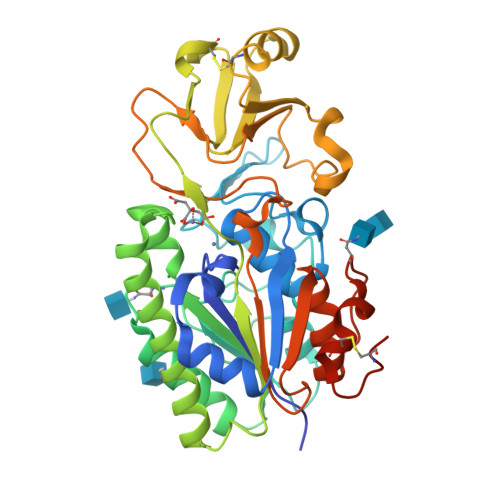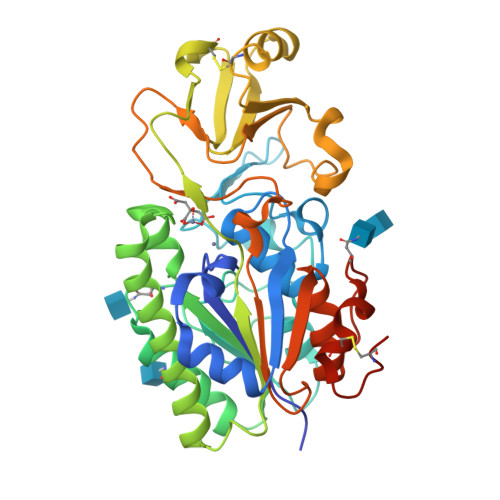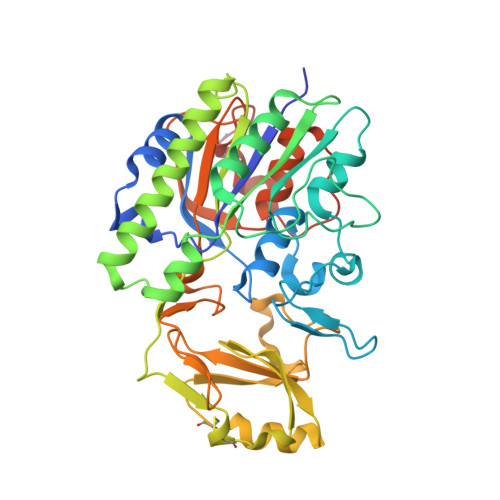Molecular basis of purinergic signal metabolism by ectonucleotide pyrophosphatase/phosphodiesterases 4 and 1 and implications in stroke.
Albright, R.A., Ornstein, D.L., Cao, W., Chang, W.C., Robert, D., Tehan, M., Hoyer, D., Liu, L., Stabach, P., Yang, G., De La Cruz, E.M., Braddock, D.T.(2014) J Biol Chem 289: 3294-3306
- PubMed: 24338010
- DOI: https://doi.org/10.1074/jbc.M113.505867
- Primary Citation of Related Structures:
4LQY, 4LR2 - PubMed Abstract:
NPP4 is a type I extracellular membrane protein on brain vascular endothelium inducing platelet aggregation via the hydrolysis of Ap3A, whereas NPP1 is a type II extracellular membrane protein principally present on the surface of chondrocytes that regulates tissue mineralization. To understand the metabolism of purinergic signals resulting in the physiologic activities of the two enzymes, we report the high resolution crystal structure of human NPP4 and explore the molecular basis of its substrate specificity with NPP1. Both enzymes cleave Ap3A, but only NPP1 can hydrolyze ATP. Comparative structural analysis reveals a tripartite lysine claw in NPP1 that stabilizes the terminal phosphate of ATP, whereas the corresponding region of NPP4 contains features that hinder this binding orientation, thereby inhibiting ATP hydrolysis. Furthermore, we show that NPP1 is unable to induce platelet aggregation at physiologic concentrations reported in human blood, but it could stimulate platelet aggregation if localized at low nanomolar concentrations on vascular endothelium. The combined studies expand our understanding of NPP1 and NPP4 substrate specificity and range and provide a rational mechanism by which polymorphisms in NPP1 confer stroke resistance.
Organizational Affiliation:
From the Department of Pathology, Yale University School of Medicine, New Haven, Connecticut 06510.




















